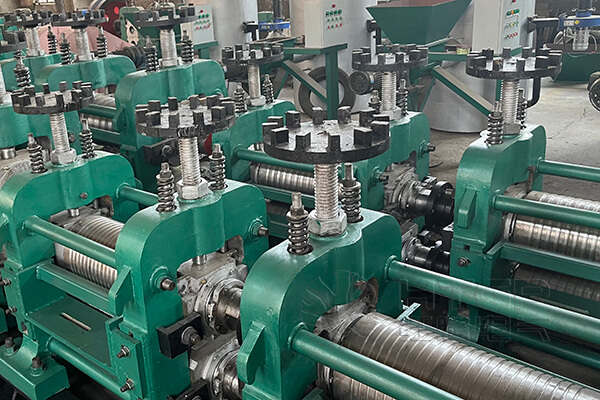From Scrap Iron or Steel to High-Quality Rebar: A Guide to the Rebar Rolling Mill
A rebar rolling mill is a facility that is used to manufacture rebar from raw materials such as scrap iron or steel. The mill typically consists of a series of rolling stands arranged in a line, through which the steel is passed to progressively reduce its diameter and increase its length. The rolling process involves heating the steel to a high temperature and then passing it through a series of rollers that apply pressure to reduce its size and shape.
The rebar rolling mill is typically operated using a continuous process, in which the steel is fed into the mill at one end and emerges as finished rebar at the other end. The mill can be configured to produce rebar in various sizes and shapes, depending on the needs of the customer or the requirements of the construction project.

Process of Making Rebar
Rebar, short for reinforcing steel bar, is a common material used in construction to provide reinforcement and support to concrete structures. The process of making rebar involves several steps, including:
Melting: The first step in making rebar is to melt scrap iron or steel in an electric arc furnace. The furnace heats the scrap metal to a temperature of around 3,000 degrees Fahrenheit, melting it into a liquid form.
Refining: Once the metal has been melted, it is refined to remove impurities. This is done by adding various alloys and fluxes to the liquid metal and stirring it to remove any remaining impurities.
Casting: After the metal has been refined, it is poured into a mold to form the shape of the rebar. The mold is typically made of sand or steel and is designed to produce rebar in various sizes and shapes.
Rolling: Once the rebar has solidified, it is removed from the mold and sent through a series of rollers to reduce its diameter and increase its length. This process is called hot rolling, and it involves heating the rebar to a high temperature and then passing it through a series of rollers to gradually reduce its size and shape.
Quenching: After the rebar has been rolled, it is cooled rapidly in a process called quenching. This helps to harden the steel and increase its strength.
Stretching: The final step in making rebar is to stretch it to the desired length. This is done by pulling the rebar through a series of dies, which gradually increase its length and reduce its diameter until it reaches the desired size and shape.
Once the rebar has been stretched, it is typically cut into smaller lengths and bundled for shipping to construction sites.
Raw Material for Rebar
The raw material used to make rebar is typically scrap metal, which is collected from various sources such as demolition sites, construction sites, and manufacturing plants. The scrap metal is then melted down in an electric arc furnace and refined to remove impurities before being cast into the shape of rebar. The primary materials used to make rebar are iron and steel, which are both strong and durable and provide the necessary reinforcement for concrete structures. The specific type of steel used to make rebar can vary, but it is typically a low-alloy steel that is designed to have high strength and good weldability.
In addition to iron and steel, the raw materials used to make rebar can also include various alloys and additives to improve the properties of the finished product. For example, chromium and nickel can be added to the steel to improve its corrosion resistance, while vanadium and manganese can be added to increase its strength and toughness.
The quality of the raw materials used to make rebar is important because it affects the properties of the finished product. For example, impurities in the raw materials can weaken the steel and reduce its ability to provide reinforcement to concrete structures. For this reason, manufacturers typically carefully select and test the raw materials used to make rebar to ensure that they meet the necessary specifications for strength, durability, and other properties.
Importance of Rebar Rolling Mill
The rebar rolling mill is an important component of the steel industry, as it provides a means of manufacturing high-quality rebar that can be used to reinforce concrete structures. The mill must be carefully designed and operated to ensure that the finished rebar meets the necessary specifications for strength, durability, and other properties and that it is free from defects that could compromise its performance or safety.

